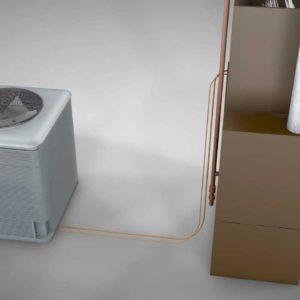Understanding Central Air Conditioners: How They Work and Common Issues
Central air conditioners, while differing in models, generally work on similar principles. In this article, we will delve into the details of how central air conditioners function and potential problems that homeowners may experience. We will also explore the various components of a central air system, including the condensing unit, evaporator coils, compressor, and circulation blower fan.
The Components of a Central Air System
A central air conditioning system is composed of several main components, including:
Condensing Unit
The condensing unit is located outside the home and houses the air conditioner condenser coils, compressor, and condenser fan motor.
Evaporator Coils
Evaporator coils, also known as cooling coils, are mounted on top of a furnace or air handler and are located inside the home.
Furnace or Air Handler
This component uses a circulation blower fan to draw air through the return vent, blow it past the evaporator coils, and force the air through the home’s venting system.
The room air is then drawn back through the return vent, and the airflow cycle continues. Once the room air has cooled sufficiently, the wall thermostat signals the circulation blower fan and condensing unit to turn off until the room temperature increases.
Understanding the Cooling Process: Temperature Control, Cooling, and Air Circulation
The central air conditioning process can be broken down into three main factors: temperature control, cooling, and air circulation.
Temperature Control
The temperature in the home is regulated by the wall thermostat, which must be located in a central area and positioned at eye level away from direct sunlight for optimal temperature regulation. When the thermostat detects an increase in temperature, it activates the cooling circuit, allowing for the control board to send power to the circulation blower fan motor and the condensing unit contactor.
Cooling
The compressor, located within the condensing unit, acts as a pump, compressing refrigerant in gas form into the condenser coils, where the gas is condensed into a hot liquid. The condenser coils dissipate heat as the liquid travels through them, with the assistance of a fan. As the refrigerant liquid travels through the evaporator coils, it expands into a gas, making the coils cold. The gas then flows through the coils to a suction line attached to the compressor, which converts the gas back into a liquid, allowing the cooling cycle to continue.
Air Circulation
Air circulation is maintained by the circulation blower fan, which ensures proper airflow throughout the home. To guarantee the system’s efficient operation, air filters should be checked monthly and replaced as needed.
Common Issues and Maintenance Tips for Central Air Conditioners
It is important to regularly maintain your central air conditioning system to prevent potential problems and ensure efficient operation. Some common issues and maintenance tips include:
Keeping the Condenser Clean
If debris, such as leaves or dirt, clog the condenser’s coils, the heat will not dissipate properly, reducing the system’s efficiency. To clean the condenser, use a garden hose to spray water through the coils, working from the inside out.
Regularly Replacing Air Filters
To maintain proper airflow, check and replace your air filter regularly. There are several types of filters available, ranging from 1 to 5 inches in thickness, and they can be installed in the return vent or an air cleaner.
Addressing Noisy Circulation Blower Fans
If your circulation blower fan becomes noisy during use, the set screw on the blower wheel may have loosened, causing the wheel to wobble on the motor shaft. To fix this problem, tighten or replace the screw or replace the blower wheel.
Finding Parts and Repair Solutions for Central Air Conditioners
Repair Clinic offers solutions for many of the problems you may be experiencing with your central air system. To find a complete list of compatible parts, enter the appropriate model number on our website’s search engine. Keep in mind that the condensing unit and furnace will have separate model numbers, so finding specific parts may require searching by individual components.
Our site also features an extensive selection of instructional videos to assist you, covering topics such as part testing, disassembly, and part replacement. At Repair Clinic, we make fixing things easy, ensuring that your central air conditioning system remains functional and efficient year-round.

